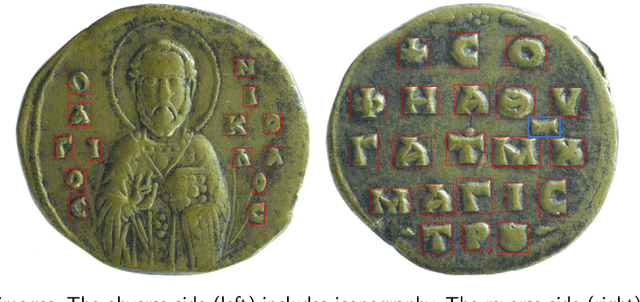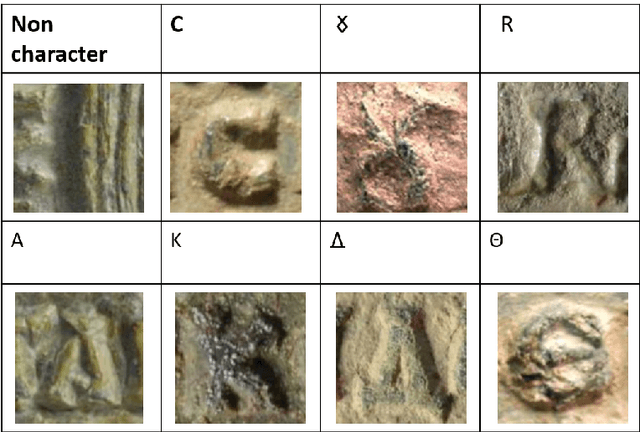Character Recognition in Byzantine Seals with Deep Neural Networks
Paper and Code
Jan 19, 2024



Seals are small coin-shaped artifacts, mostly made of lead, held with strings to seal letters. This work presents the first attempt towards automatic reading of text on Byzantine seal images.Byzantine seals are generally decorated with iconography on the obverse side and Greek text on the reverse side. Text may include the sender's name, position in the Byzantine aristocracy, and elements of prayers. Both text and iconography are precious literary sources that wait to be exploited electronically, so the development of computerized systems for interpreting seals images is of paramount importance. This work's contribution is hence a deep, two-stages, character reading pipeline for transcribing Byzantine seal images. A first deep convolutional neural network (CNN) detects characters in the seal (character localization). A second convolutional network reads the localized characters (character classification). Finally, a diplomatic transcription of the seal is provided by post-processing the two network outputs. We provide an experimental evaluation of each CNN in isolation and both CNNs in combination. All performances are evaluated by cross-validation. Character localization achieves a mean average precision (mAP@0.5) greater than 0.9. Classification of characters cropped from ground truth bounding boxes achieves Top-1 accuracy greater than 0.92. End-to-end evaluation shows the efficiency of the proposed approach when compared to the SoTA for similar tasks.
 Add to Chrome
Add to Chrome Add to Firefox
Add to Firefox Add to Edge
Add to Edge